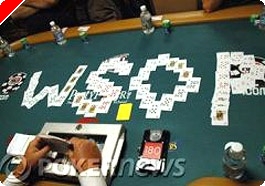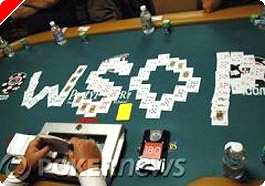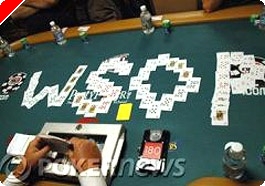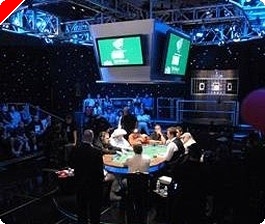A Comprehensive Look at the WSOP Final Table Delay �C Part One
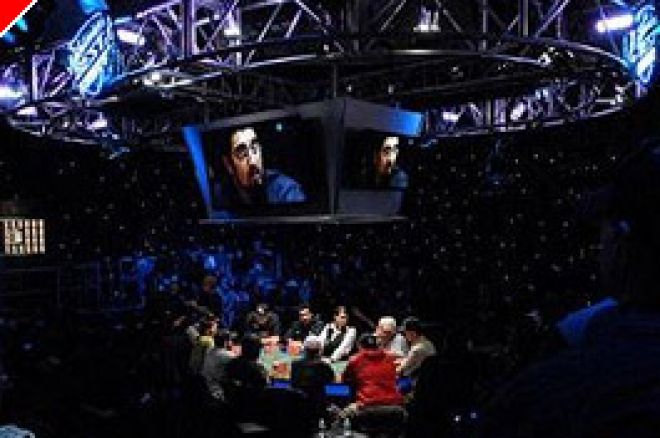
By now, everyone in poker has heard about the new format for this year's WSOP Main Event. The final table will be delayed several months to be shown "nearly live" on ESPN. It's a bold and controversial proposal, surrounded by rumors and wild theories. This article aims to separate the facts from the fiction.
The primary reason for the new change? In a word, ratings.
The demographics for televised poker have been dropping in recent years, and that affects everyone in the poker world, from Harrah's and ESPN to PokerStars and Full Tilt to the grinders in the cash games who have fewer fresh fish to feed on. This change is designed to increase the buzz around the final table of the WSOP Main Event in an attempt to put it on par with other major "sports" championships. (While poker isn't actually a sport, the fans watch it in much the same way.) If the TV ratings for poker continue to fall, we face the possibility of losing poker on TV, except for late-night paid-for specials.
The proponents of this plan claim that it will reinvigorate televised poker, draw new fans to the game, and potentially create another Moneymaker-style poker boom that would boost the entire industry. (Is there anyone in poker who didn't benefit from the post-Moneymaker boom?) The detractors of this plan claim that this delay could kill the WSOP �� or worse, kill some of the final nine players.
THE NEW SCHEDULE
Event #1 of the World Series of Poker starts at the end of this month, and the first 46 days of the WSOP will proceed on the original schedule. The only change is on the last day of the last event, and it will only directly affect the final nine players. (In last year's field of 6,358, they represented 0.0014% of the total.) When the biggest bubble boy in poker history is eliminated in tenth place on July 14, the remaining nine players will take a 117-day break before returning to play the final table. That's nearly 17 weeks, or about four months.
Okay, so ratings are important. But why is the delay so long? Why four months? Why not two days, two weeks, or two months?
For the answer, let's take a look at the full schedule for the Main Event and ESPN's coverage (all of ESPN's WSOP episodes are two hours each, except for the one-hour Final Table Preview on Nov. 4):
July 3-6: Days 1a, 1b, 1c, 1d of WSOP Main Event
July 7: *Off Day*
July 8-9: Days 2a, 2b
July 10-14: Days 3-7 (down to final nine players)
July 22 - Aug. 26: ESPN airs WSOP prelim events for six weeks
Sep 2 - Oct 28: ESPN airs WSOP Main Event for nine weeks
Nov. 4: ESPN airs a one-hour final table preview show
Nov. 9: Final Table is played, nine players down to final two
Nov. 10: Heads-up play for the WSOP Championship
Nov. 11: ESPN broadcasts the final table at 9:00 pm ET
Why is the delay is so long? ESPN needs that time to show the prelims and the early days of the Main Event to build the viewing audience for the final table. To maximize the ratings (which, after all, is the primary goal), the early days of the Main Event have to air before the final table to build the storyline and introduce the players. So even if ESPN dropped covering prelims entirely, the delay would still be two and a half months.
WHAT HAPPENS TO THE 'NOVEMBER NINE?'
A source at Harrah's referred to the nine final tablists as the "November Nine," and I'm going to use that label to describe these nine final tablists going forward. It's catchy, clear, and concise, and it's much easier than saying the "nine final tablists in the WSOP Main Event." As a bonus, it not only refers to the players, but the day they'll be returning to play the final table (Nov. 9th).
As soon as the final table is set, the November Nine will immediately be paid ninth-place money. (Last year, ninth place paid $525,934; the average over the past four years was $890,798.) The remaining prizepool will be placed in an interest-bearing account, and the interest will be added to the prizepool.
The November Nine will be encouraged to stick around the next day (July 15) for a photo shoot, but according to WSOP Communications Director Seth Palansky, "Nothing is mandatory." The Player Release Form for all Main Event entrants is the same form used in prior years, and the November Nine will have no additional responsibilities forced upon them. There are no "reality TV" scenarios, and if the players don't want any ESPN cameras following them home, that is their choice.
While the final nine are the ones most inconvenienced by the new schedule, they also have the potential to gain the most. WSOP Commissioner Jeffrey Pollack said, "We think the effect on those [final nine] players will be overwhelmingly positive, and we think it's going to do a lot to further mainstream this game." They'll likely pick up at least 15 minutes of fame in their hometowns/home states/home countries, and receive some broad attention from the mainstream media as a group.
Because anyone can win (a chip and a chair), even the player with the fewest chips will likely receive more media exposure than last year's third-place finisher. The potential to win poker's biggest prize, even as the underdog, is a compelling story that the mainstream media can run with. Finishing third in something that has already happened is not.
The delay also gives the November Nine an advantage in sponsor negotiations. Rather than signing a sponsor agreement late at night while exhausted and euphoric, players can negotiate contracts that are examined by a lawyer, and pursue additional sponsors outside of the usual online poker sites �� WSOP rules allow players to wear multiple logos. (Last year, Robert Williamson III sported at least five different sponsor logos.) Also, if the ratings increase as expected, the November Nine should be able to earn more from their sponsorships.
Some of the non-professional players are expected to hire poker coaches to help them improve their game during the delay, and all nine will undoubtedly be watching ESPN's coverage to get a feel for their opponents. Most people see this as a negative, saying that it disrupts the natural flow of the tournament, allowing players to dramatically improve their skills and potentially change the outcome. Others hope that it will improve the overall play at the final table, making it more entertaining and skill-based than years past. Regardless, 117 days is not enough time to turn Richie Cunningham into Allen Cunningham.
When it's time to resume play in November, each player will receive an all-expenses paid trip for two back to the Rio in Las Vegas for the final table.
Check back tomorrow for part two, as we explore how the final table will differ this year, and what some of the issues are that are fueling some of the criticism toward this big change in the World Series of Poker.

